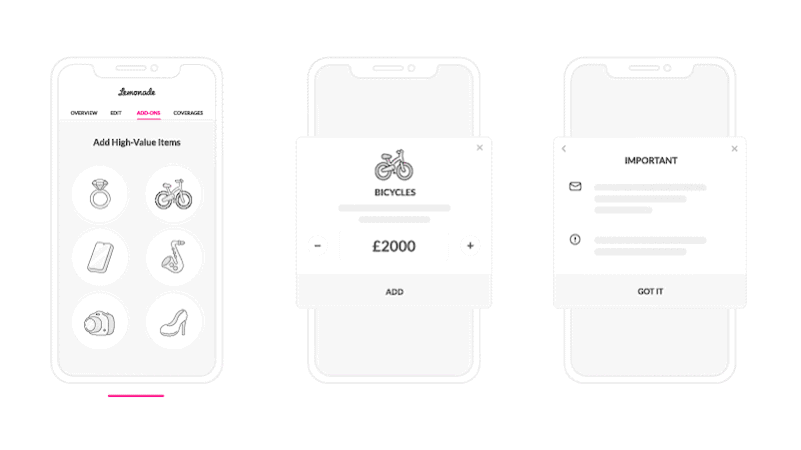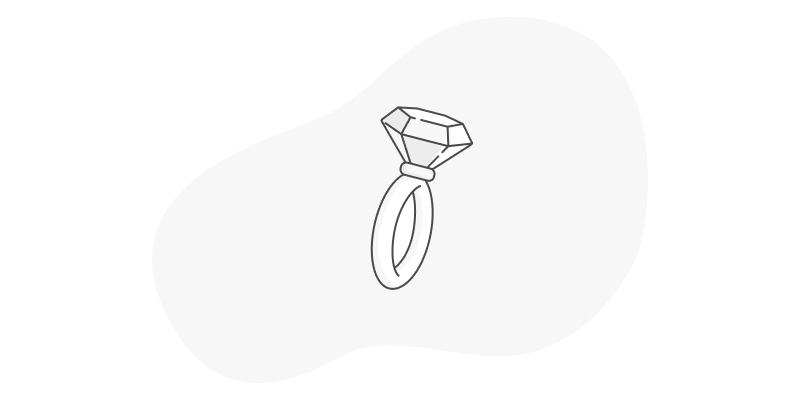Everything you need to know about covering your valuables
Here's the lowdown on cover for your items worth more than £2000.

Here's the lowdown on cover for your items worth more than £2000.

If you were moving overseas and could only pack one suitcase, what would you take with you? Maybe it’s your engagement ring, a new Nikon camera, or the antique gifted by Grandpa.
We know how important these things are to you, which is why we offer extra cover for them under your insurance policy.
Let’s cut through the gobbledygook of insurance jargon. Adding your valuables to your policy means something pretty simple: Ensuring that they’re covered sufficiently.
Your base policy will automatically cover belongings worth less than £2,000. Adding your more expensive items covered means they can be repaired or replaced at their full value in the case of robbery, burglary, fire, and a wide array of other bad things that could happen to them.
Generally speaking, you can add extra cover for the following items:
A few things to keep in mind: You can cover multiple items from each category – say, two rings, a watch, an antique painting, and a new guitar – but the sky isn’t the limit. If you have enough instruments for an orchestra, or an entire Rolex collection in your jewellery box, your extra cover can’t insure all of them. The maximum combined limit for all valuable items added to your policy is £20,000.
Our policy is designed to cover your personal belongings. This means that while we can cover home office equipment that belongs to you, we can’t cover any business equipment that’s owned by your company or employer.
Another scenario to consider: If your spouse or significant other is the one in possession of a ring you’d like to add, they will need to be listed on your policy by name as an additional insured, However, if they do not live with you at the insured address, they will need to add the jewellery to their own insurance policy to ensure cover.
Here are some things we won’t cover:
When you first get your Lemonade policy, you’ll be given the option to secure 14 days of temporary extra cover for your items by declaring them on your quote. Here’s how it works:
Be careful: This doesn’t mean that your valuable items are covered just yet. You’ll now need to submit receipts and proof of ownership for each item in order to have them added to your policy.
Once your policy is active, you will receive an email with a link to submit the items you’ve declared while setting up. You’ll need to provide a description of the item, a receipt or appraisal, and a photo of the item with today’s date visible in the background.
Depending on the nature of the item, we may require some additional information. For instance, a warranty card for your watch, or the serial number on the frame of your bike. Providing as much information as possible can help smoothen the process tremendously!
Once your request has been sent, our Customer Experience Team will have it reviewed and will be in touch with you should they need anything else to proceed.
If you skipped this step during your quote, or have some new valuables you’d like to add to an already active policy, you can submit your request through Lemonade.com/uk or our Moblie App at any time. You can also email us at [email protected].

This extra cover is entirely optional and is not part of your base insurance policy, so the decision of whether to accept or deny your claim is up to our adjusters. That said, having clear, correct documentation at hand at the point of claim can help us ensure the process goes as smoothly as possible.
The maximum we would cover for your added items is up to the value to which they were added. However, while it’s safer to have more cover than not enough – adding an item for a higher value doesn’t mean you’ll receive a bigger payout.
For example: If you’ve added a Rolex to your policy for £10,000 and it goes missing, if that Rolex only costs £8,000 to replace today, we’ll pay £8,000. If your item was purchased second-hand, we will only cover the cost of a second-hand replacement.
These added items will be subject to the same cover as your base policy. If you would like to have them protected against theft away from home, or against damage that was (unintentionally) your fault, you will need to include the Theft & Loss, and Accidental Damage add-ons as well.
Once your items are added to your policy, there are a few things that you will need to provide if you’re ever to claim for them: Proof of possession, ownership, and value. Okay, so what does that all mean?
If you’re to file a claim, our claims team will typically request recently taken photos of your items to ensure that they were in your possession around the time of the incident (in case they were lost or stolen). This prevents anyone from adding valuables that they used to own, but were actually lost or sold long before. Digital photos usually carry metadata showing the date an image was taken, but this isn’t always the case. If we need to confirm further, we’ll let you know.
For electronic devices like phones, laptops, or custom-built PCs, we may require a recent picture of the device turned on and the device’s ‘about’ page visible. With this, we’ll know the model, the manufacturer, serial number, and other important information that can help with the claim.
Only the people listed on your policy by name are covered. So if you’ve gifted your partner an engagement ring, they would need to be listed on your policy too (if they live with you, of course). We may ask for documentation to help us confirm that you (or your partner) is the current owner of the item. This could be with a purchase receipt, an updated appraisal, or a bank transfer in your name that shows you had purchased the item.
If one of your valuable items gets lost, stolen, or damaged, we’ll need to determine what it actually costs to repair or replace. For this, we’ll ask for any receipts, appraisals, or links to a retailer selling the same make and model today. If your item was purchased second-hand, we will only be able to cover the cost of a second-hand replacement.
All documentation is not created equal. The right combination of paperwork will make our underwriters smile in delight—and who doesn’t love making an underwriter smile?
First, there are receipts. That’s simple enough, eh? But a few caveats:
We understand that not everyone holds on to receipts though. This is where appraisals come into play. Appraisals are a handy alternative to confirm an item’s value, and are especially useful for items that wouldn’t usually have a store receipt, or for items that rise in value over time – like the wedding ring you inherited from your great-grandmother.
An appraisal should ideally include the following:
That really depends on what kind of item we’re talking about. For instance, you’d likely have a store receipt for bicycles, camera equipment, or jewellery you purchased recently. But if that jewellery is a well-worn family heirloom, then you’d want to obtain an updated appraisal (even if you were able to find the original paperwork, we wouldn’t be able to accept a receipt from 1902).
What about artwork? Either a receipt or an appraisal might make sense, depending on the circumstances. We’re happy to answer specific questions and work through what documentation we need for your individual case.
That said, there are a few things to keep in mind for specific types of items.
Should you have any other questions about adding valuables to your cover, feel free to email us at [email protected] and we’ll be more than happy to assist you through the process.

Please note: Lemonade articles and other editorial content are meant for educational purposes only, and should not be relied upon instead of professional legal, insurance or financial advice. The content of these educational articles does not alter the terms, conditions, exclusions, or limitations of policies issued by Lemonade, which differ according to your state of residence. While we regularly review previously published content to ensure it is accurate and up-to-date, there may be instances in which legal conditions or policy details have changed since publication. Any hypothetical examples used in Lemonade editorial content are purely expositional. Hypothetical examples do not alter or bind Lemonade to any application of your insurance policy to the particular facts and circumstances of any actual claim.